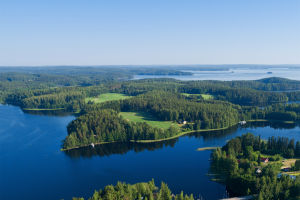What are the Flaming Mountains?
Flaming Mountains, situated in the northern margin of the Turpan Basin in Xinjiang, are one of the most iconic attractions of the region.
Locally known as "Kiziltag," meaning "Red Mountain," this natural wonder gets its name from its vibrant red appearance and intense heat.
The Flaming Mountains are not only a geographic marvel but also a cultural symbol, gaining widespread recognition through the epic Chinese novel Journey to the West.
How Were the Flaming Mountains Formed?
A Geological Masterpiece
The formation of Flaming Mountains can be traced back 50 to 60 million years to the Himalayan orogeny period. As part of the Tianshan mountain range, this area experienced intense geological activity. Horizontal coal seams buried deep within the strata were transformed into inclined seams due to crustal movements. Exposure of these seams to air resulted in oxidation, causing heat accumulation over millions of years.
An Arid Terrain
Over time, lateral crust movements created fold zones, while wind and rain erosion sculpted the rugged, undulating landscape. The summer temperatures in this region soar to 47°C, with areas exposed to direct sunlight reaching a scorching 80°C, enough to cook food naturally.
Main Attractions in the Flaming Mountains
The Flaming Mountains encompass a variety of attractions that showcase the area's natural and cultural splendor.
Flaming Mountain Grand Canyon
Location: Northern Turpan Basin
Ticket: Free
The Flaming Mountain Grand Canyon is a stunning geological formation featuring valleys with vibrant red hues. Tuyugou Grand Canyon, the most prominent, is an 8 km-long natural wonder. The canyon's lush greenery and gurgling streams create a striking contrast against the fiery red mountains.
Bezeklik Thousand Buddha Caves
Location: Flaming Mountain Area, Gaochang District
Ticket: CNY 40
Dear Lykkers! This significant Buddhist site, dating back to the Gaochang period (A.D. 499-640), originally housed 83 caves adorned with murals. Despite centuries of erosion, 57 caves remain, making it one of Xinjiang’s most culturally rich destinations.
Mazar Village
Location: Tuyuk Valley, Shanshan County
Ticket: Free
Mazar Village, over 2,600 years old, offers a glimpse into traditional life. The two-layer clay residences feature bungalows above and cool cave dwellings below, ideal for summer’s intense heat. Stargazing here unveils a breathtaking view of the Milky Way.
Grape Valley
Location: Northeast of Turpan
Ticket: CNY 60
Grape Valley is a verdant oasis known for its lush vineyards. Visitors can enjoy performances, explore Uyghur cultural sites, and sample an array of local grapes.
Gaochang Ancient City
Location: Sanbao Township
Ticket: CNY 70
Once the capital of the Gaochang kingdom, this ancient city offers a glimpse into history. Despite the erosion of time, the city’s outer walls and temple ruins stand as a testament to its past grandeur.
Visiting the Flaming Mountains
Recommended Route
Start at Grape Valley, proceed to Bezeklik Thousand Buddha Caves, and then explore the Flaming Mountain Grand Canyon. Next, visit the traditional Mazar Village and end the day watching the sunset at Gaochang Ancient City.
Transportation
From Turpan, the Flaming Mountains are about 29–40 km away, depending on the attraction. A taxi or rented car is the most convenient mode of transport.
Best Time to Visit
May to October is the ideal time to visit. While summer temperatures are high, the season offers sweet fruits and vibrant landscapes. Winters are cold, and spring can be windy.
Experience the Flaming Mountains and their surrounding treasures to uncover a blend of natural beauty and cultural heritage.


